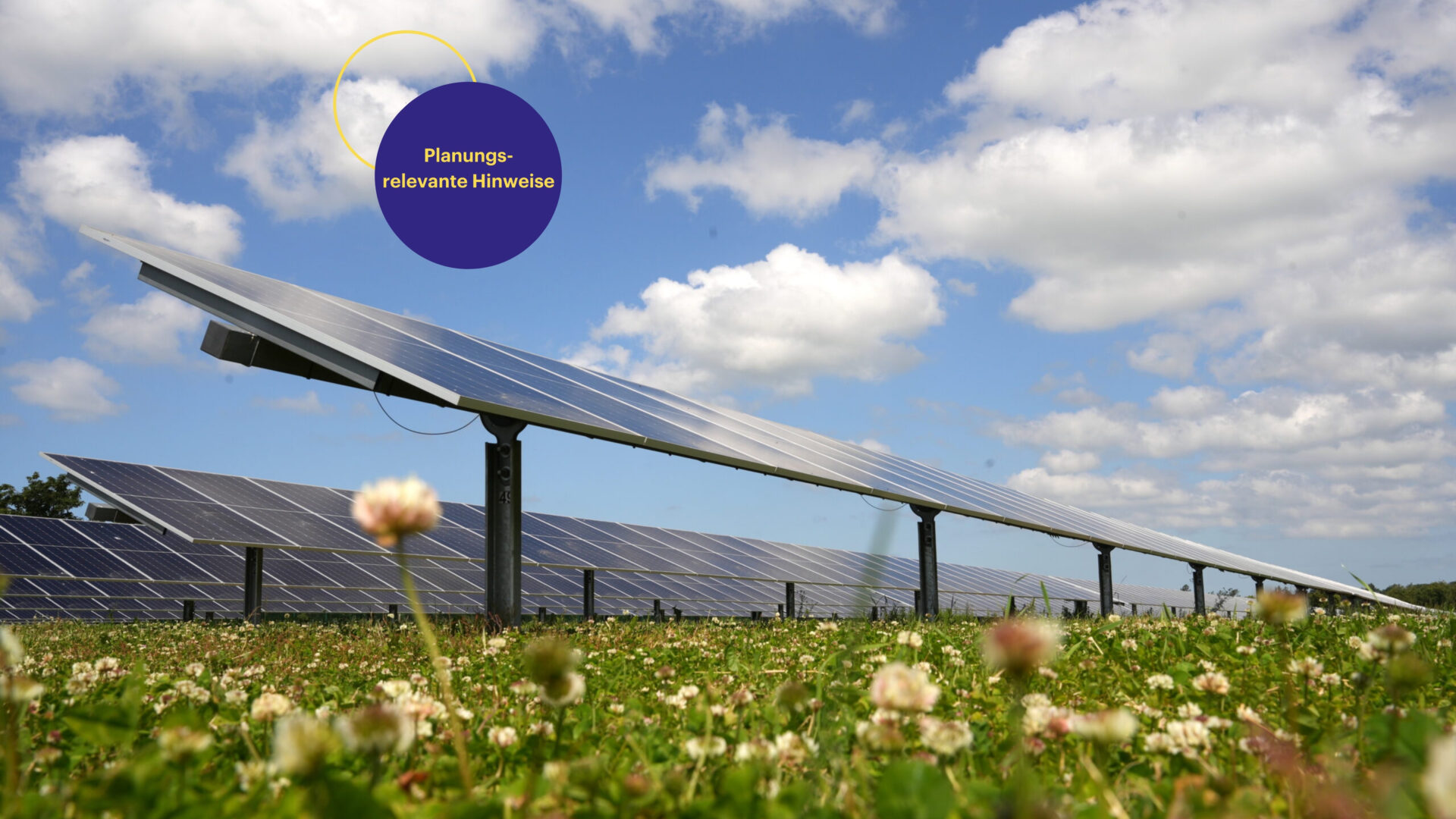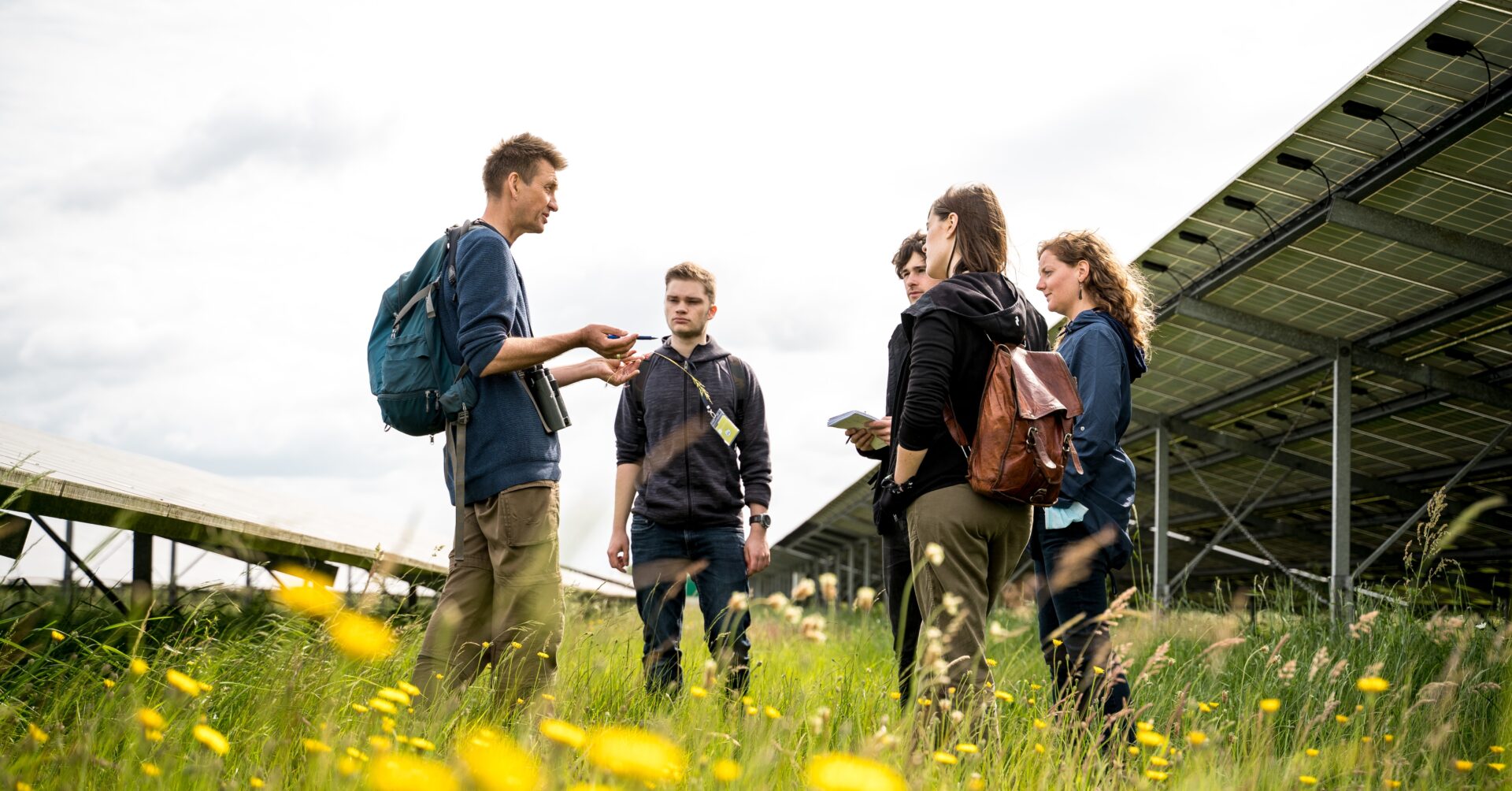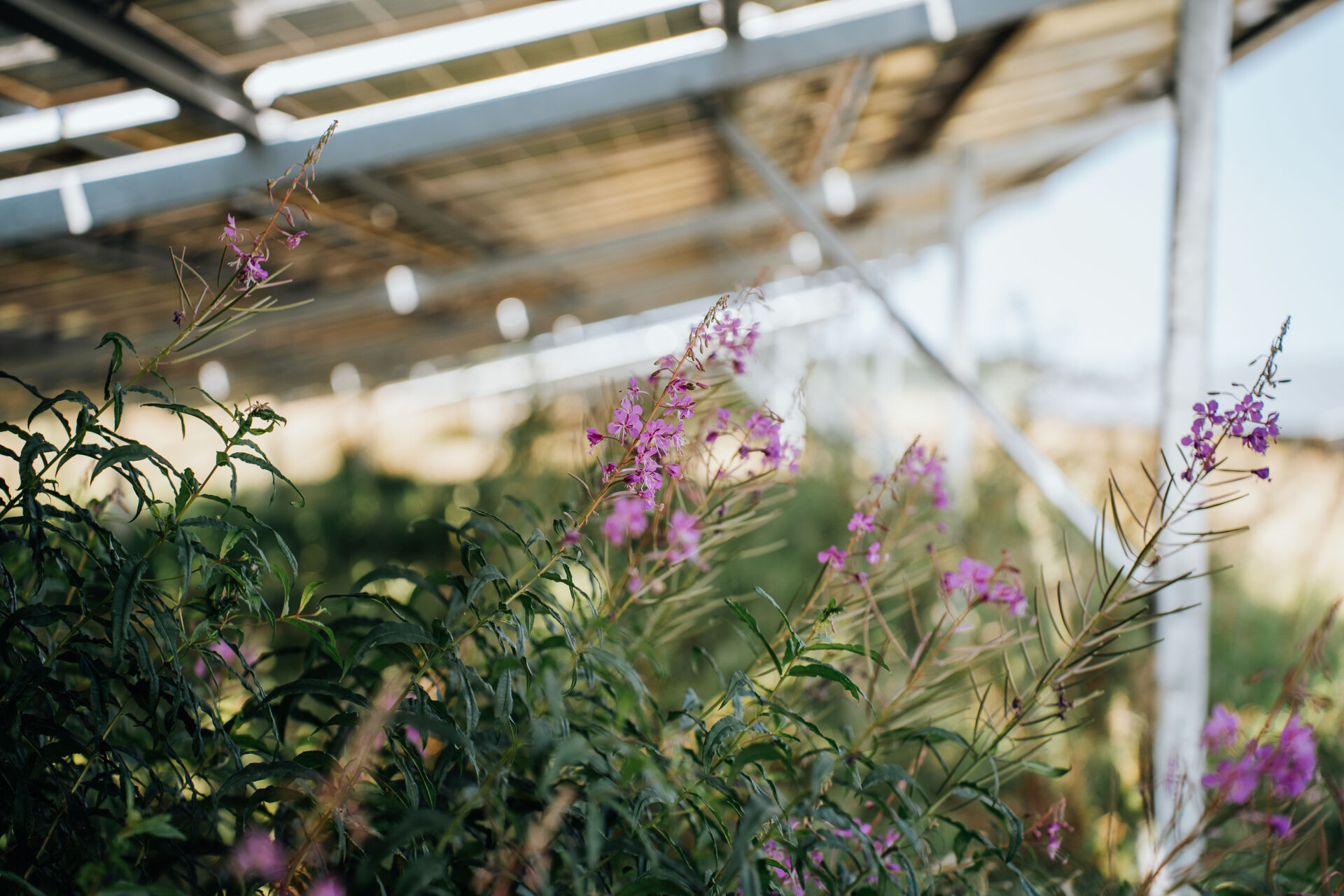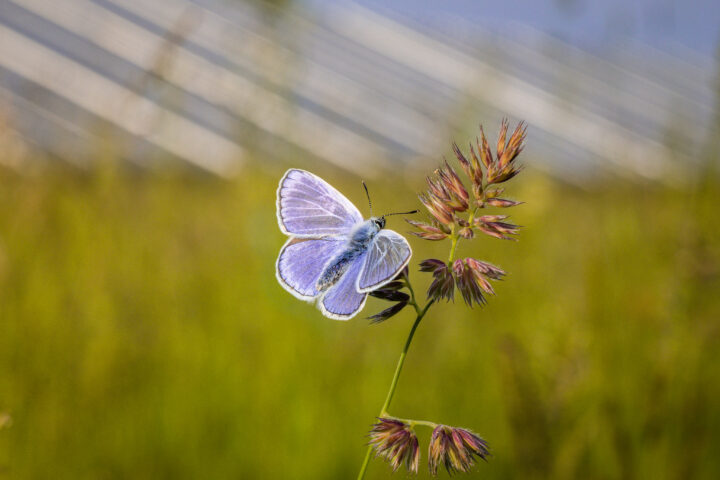The results of the comprehensive bne study to Biodiversity in ground-mounted PV systems were recognised at the Specialist conference "Biodiversity in solar parks" on 27 March 2025 in Berlin. The event attracted around 80 participants on site and reached more than 900 viewers in the livestream. Over 200 questions from the chat clearly show the broad public and professional interest in the topic. You can find out more about the conference in our Review. The recordings of the study publication in German are now on SonneSammeln in the Media centre for the study available. We are currently working on an English translation of the study results.
Lecture 5: Planning-relevant information from the study (only in German)
How should solar parks be planned so that they become species-rich? Can a high level of biodiversity still develop in closely spaced PV systems? In their presentation "Planning-relevant information from the study", the two study authors explain Dr Tim Peschel (Ecology & Environment) and Rolf Peschel (The project mentor) their results and refer to row spacing, racks and other structures such as paths.
You can find the presentation of the speakers here and in our Media centre for the study.
The most important findings:
- A Area scouting by a specialist reduces risks, e.g. to prevent higher costs due to equalisation measures.
- The construction of a solar park creates Extensive grassland or it will be preserved. The Soil quality increases, as neither pesticides nor fertilisers are introduced. Existing structures should be included.
- The Extensive utilisation of the area leads to a Increasing biodiversity. The number of arthropods in particular will rise sharply as a result.
- The Biodiversity development in ground-mounted PV systems does not require any specific additional measures to take place. However, such measures can have a supporting effect.
- The Care is crucialIt must be adapted to the location, be timed according to the weather and take into account the requirements of special species protection.
- Looking at the definition of the Nature conservation in the Federal Nature Conservation Actthen solar parks are at best a minimal intervention represent.
- Skylarks breed in solar parks, sometimes even in very large numbers.
- Bats actively use solar parks as a feeding habitat. For bats, a solar park is a significant improvement compared to arable land.
- Come Reptiles If they occur in the vicinity of an installation, it can be expected that they will also accept the solar park as a habitat.
Download the study (German)
You can read all the results of the study on SonneSammeln. As this is a comprehensive work, we have summarised the most important findings in a Abstract summarised.
All lectures on the programme content:
All recordings at a glance:
- Lecture 1: Presentation of the study results (Speakers: Dr Tim Peschel, Rolf Peschel)
- Lecture 2: Panel discussion with nature conservation, business and politics (only in German)
- Lecture 3: Birds and solar parks (Speaker: Matthias Stoefer)
- Lecture 4: Why solar parks can be suitable habitats for animals and plants (Speakers: Dr Tim Peschel, Rolf Peschel)
- Lecture 6: Bats in the solar park (Speaker: Dr Helmut Schlumprecht)






